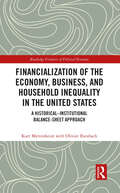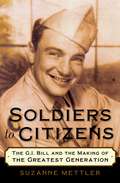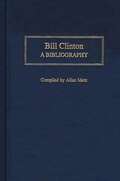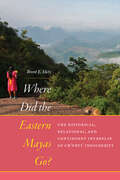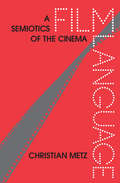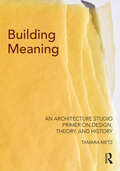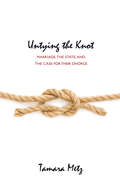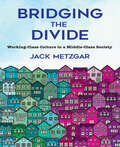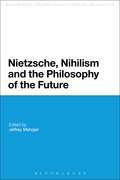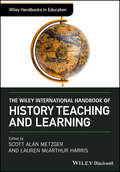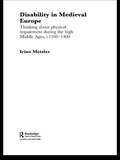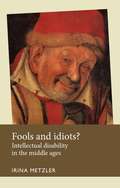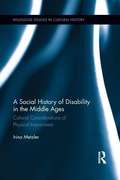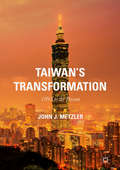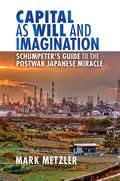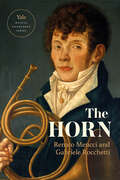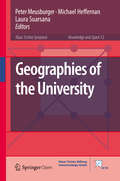- Table View
- List View
Financialization of the Economy, Business, and Household Inequality in the United States: A Historical–Institutional Balance-Sheet Approach (Routledge Frontiers of Political Economy)
by Kurt Mettenheim Olivier ButzbachThis second volume on the political and social economy of financialization in the US focuses on the consequences of the rise of finance for the American macroeconomy, household inequality, and the management of nonfinancial business enterprises. A historical–institutional balance-sheet approach to long-term trends and recent change in the US reveals a series of anomalies and provisos for critical, heterodox, and mainstream economic approaches and provides new perspectives on debates about political economic change in advanced economies since the 2007–2008 financial crisis. This book marks a significant contribution to the literature on financialization and studies in social economics, household economics, the structure and management of nonfinancial business enterprises, and American political economy.
Financialization of the Economy, Business, and Household Inequality in the United States: A Historical–Institutional Balance-Sheet Approach (Routledge Frontiers of Political Economy)
by Kurt Mettenheim Olivier ButzbachThis second volume on the political and social economy of financialization in the US focuses on the consequences of the rise of finance for the American macroeconomy, household inequality, and the management of nonfinancial business enterprises. A historical–institutional balance-sheet approach to long-term trends and recent change in the US reveals a series of anomalies and provisos for critical, heterodox, and mainstream economic approaches and provides new perspectives on debates about political economic change in advanced economies since the 2007–2008 financial crisis. This book marks a significant contribution to the literature on financialization and studies in social economics, household economics, the structure and management of nonfinancial business enterprises, and American political economy.
Soldiers to Citizens: The G.I. Bill and the Making of the Greatest Generation
by Suzanne Mettler"A hell of a gift, an opportunity." "Magnanimous." "One of the greatest advantages I ever experienced." These are the voices of World War II veterans, lavishing praise on their beloved G.I. Bill. Transcending boundaries of class and race, the Bill enabled a sizable portion of the hallowed "greatest generation" to gain vocational training or to attend college or graduate school at government expense. Its beneficiaries had grown up during the Depression, living in tenements and cold-water flats, on farms and in small towns across the nation, most of them expecting that they would one day work in the same kinds of jobs as their fathers. Then the G.I. Bill came along, and changed everything. They experienced its provisions as inclusive, fair, and tremendously effective in providing the deeply held American value of social opportunity, the chance to improve one's circumstances. They become chefs and custom builders, teachers and electricians, engineers and college professors. But the G.I. Bill fueled not only the development of the middle class: it also revitalized American democracy. Americans who came of age during World War II joined fraternal groups and neighborhood and community organizations and took part in politics at rates that made the postwar era the twentieth century's civic "golden age." Drawing on extensive interviews and surveys with hundreds of members of the "greatest generation," Suzanne Mettler finds that by treating veterans as first-class citizens and in granting advanced education, the Bill inspired them to become the active participants thanks to whom memberships in civic organizations soared and levels of political activity peaked. Mettler probes how this landmark law produced such a civic renaissance. Most fundamentally, she discovers, it communicated to veterans that government was for and about people like them, and they responded in turn. In our current age of rising inequality and declining civic engagement, Soldiers to Citizens offers critical lessons about how public programs can make a difference.
Soldiers to Citizens: The G.I. Bill and the Making of the Greatest Generation
by Suzanne Mettler"A hell of a gift, an opportunity." "Magnanimous." "One of the greatest advantages I ever experienced." These are the voices of World War II veterans, lavishing praise on their beloved G.I. Bill. Transcending boundaries of class and race, the Bill enabled a sizable portion of the hallowed "greatest generation" to gain vocational training or to attend college or graduate school at government expense. Its beneficiaries had grown up during the Depression, living in tenements and cold-water flats, on farms and in small towns across the nation, most of them expecting that they would one day work in the same kinds of jobs as their fathers. Then the G.I. Bill came along, and changed everything. They experienced its provisions as inclusive, fair, and tremendously effective in providing the deeply held American value of social opportunity, the chance to improve one's circumstances. They become chefs and custom builders, teachers and electricians, engineers and college professors. But the G.I. Bill fueled not only the development of the middle class: it also revitalized American democracy. Americans who came of age during World War II joined fraternal groups and neighborhood and community organizations and took part in politics at rates that made the postwar era the twentieth century's civic "golden age." Drawing on extensive interviews and surveys with hundreds of members of the "greatest generation," Suzanne Mettler finds that by treating veterans as first-class citizens and in granting advanced education, the Bill inspired them to become the active participants thanks to whom memberships in civic organizations soared and levels of political activity peaked. Mettler probes how this landmark law produced such a civic renaissance. Most fundamentally, she discovers, it communicated to veterans that government was for and about people like them, and they responded in turn. In our current age of rising inequality and declining civic engagement, Soldiers to Citizens offers critical lessons about how public programs can make a difference.
Bill Clinton: A Bibliography (Bibliographies of the Presidents of the United States)
by Allan MetzBill Clinton's administration was filled with new policies and achievements for the nation's future, but those achievements were easily overshadowed by personal flaws and scandal. Despite his personal problems, Clinton captured the American public and served two terms as one of our more memorable presidents. This comprehensive bibliography on Clinton will provide students with information from his childhood, his pre-presidential career, presidency (including assessments of it) and the beginning of his post-presidential life. Key access points to this information are provided in the Table of Contents and detailed author and subject indexes. Also included, is an invited essay providing an overview of the Clinton presidency and an extensive chronology of significant events.
Where Did the Eastern Mayas Go?: The Historical, Relational, and Contingent Interplay of Ch’orti’ Indigeneity (IMS Culture and Society)
by Brent E. MetzIn Where Did the Eastern Mayas Go? Brent E. Metz explores the complicated issue of who is Indigenous by focusing on the sociohistorical transformations over the past two millennia of the population currently known as the Ch’orti’ Maya. Epigraphers agree that the language of elite writers in Classic Maya civilization was Proto-Ch’olan, the precursor of the Maya languages Ch’orti’, Ch’olti’, Ch’ol, and Chontal. When the Spanish invaded in the early 1500s, the eastern half of this area was dominated by people speaking various dialects of Ch’olti’ and closely related Apay (Ch’orti’), but by the end of the colonial period (1524–1821) only a few pockets of Ch’orti’ speakers remained. From 2003 to 2018 Metz partnered with Indigenous leaders to conduct a historical and ethnographic survey of Ch’orti’ Maya identity in what was once the eastern side of the Classic period lowland Maya region and colonial period Ch’orti’-speaking region of eastern Guatemala, western Honduras, and northwestern El Salvador. Today only 15,000 Ch’orti’ speakers remain, concentrated in two municipalities in eastern Guatemala, but since the 1990s nearly 100,000 impoverished farmers have identified as Ch’orti’ in thirteen Guatemalan and Honduran municipalities, with signs of Indigenous revitalization in several Salvadoran municipalities as well. Indigenous movements have raised the ethnic consciousness of many non-Ch’orti’-speaking semi-subsistence farmers, or campesinos. The region’s inhabitants employ diverse measures to assess identity, referencing language, history, traditions, rurality, “blood,” lineage, discrimination, and more. Where Did the Eastern Mayas Go? approaches Indigenous identity as being grounded in historical processes, contemporary politics, and distinctive senses of place. The book is an engaged, activist ethnography not on but, rather, in collaboration with a marginalized population that will be of interest to scholars of the eastern lowland Maya region, indigeneity generally, and ethnographic experimentation.
Where Did the Eastern Mayas Go?: The Historical, Relational, and Contingent Interplay of Ch’orti’ Indigeneity (IMS Culture and Society)
by Brent E. MetzCopublished with the Institute for Mesoamerican Studies, University of Albany In Where Did the Eastern Mayas Go? Brent E. Metz explores the complicated issue of who is Indigenous by focusing on the sociohistorical transformations over the past two millennia of the population currently known as the Ch’orti’ Maya. Epigraphers agree that the language of elite writers in Classic Maya civilization was Proto-Ch’olan, the precursor of the Maya languages Ch’orti’, Ch’olti’, Ch’ol, and Chontal. When the Spanish invaded in the early 1500s, the eastern half of this area was dominated by people speaking various dialects of Ch’olti’ and closely related Apay (Ch’orti’), but by the end of the colonial period (1524–1821) only a few pockets of Ch’orti’ speakers remained. From 2003 to 2018 Metz partnered with Indigenous leaders to conduct a historical and ethnographic survey of Ch’orti’ Maya identity in what was once the eastern side of the Classic period lowland Maya region and colonial period Ch’orti’-speaking region of eastern Guatemala, western Honduras, and northwestern El Salvador. Today only 15,000 Ch’orti’ speakers remain, concentrated in two municipalities in eastern Guatemala, but since the 1990s nearly 100,000 impoverished farmers have identified as Ch’orti’ in thirteen Guatemalan and Honduran municipalities, with signs of Indigenous revitalization in several Salvadoran municipalities as well. Indigenous movements have raised the ethnic consciousness of many non-Ch’orti’-speaking semi-subsistence farmers, or campesinos. The region’s inhabitants employ diverse measures to assess identity, referencing language, history, traditions, rurality, “blood,” lineage, discrimination, and more. Where Did the Eastern Mayas Go? approaches Indigenous identity as being grounded in historical processes, contemporary politics, and distinctive senses of place. The book is an engaged, activist ethnography not on but, rather, in collaboration with a marginalized population that will be of interest to scholars of the eastern lowland Maya region, indigeneity generally, and ethnographic experimentation.
Film Language: A Semiotics of the Cinema
by Christian MetzA pioneer in the field, Christian Metz applies insights of structural linguistics to the language of film. "The semiology of film . . . can be held to date from the publication in 1964 of the famous essay by Christian Metz, 'Le cinéma: langue ou langage?'"—Geoffrey Nowell-Smith, Times Literary Supplement "Modern film theory begins with Metz."—Constance Penley, coeditor of Camera Obscura "Any consideration of semiology in relation to the particular field signifying practice of film passes inevitably through a reference to the work of Christian Metz. . . . The first book to be written in this field, [Film Language] is important not merely because of this primacy but also because of the issues it raises . . . issues that have become crucial to the contemporary argument."—Stephen Heath, Screen
Building Meaning: An Architecture Studio Primer on Design, Theory, and History
by Tamara MetzBuilding Meaning: An Architecture Studio Primer on Design, Theory, and History is an essential introduction to the complex relationship between form making, historical analysis, and conceptual explorations. This book focuses on the relationship and interdependence between design, theory, and history for an innovative and holistic studio approach. Rather than suggest a singular narrative, this book draws from a diverse range of thinkers and designers to highlight the many interpretations of key architectural concepts, and provides readers with the context essential for developing their own approaches to any design problem. Building Meaning is organized to reflect the typical studio process, with stand-alone chapters that provide flexibility for use at any stage of design. The ideal book for beginning and intermediate architecture students, it gives specific methods to apply in the studio to make the most of the design process, as well as focused exercises to creatively explore each concept presented. Illustrated with more than 250 color images, it enables readers to engage and understand critically the genesis of architectural ideas and their role in our social and cultural experience.
Building Meaning: An Architecture Studio Primer on Design, Theory, and History
by Tamara MetzBuilding Meaning: An Architecture Studio Primer on Design, Theory, and History is an essential introduction to the complex relationship between form making, historical analysis, and conceptual explorations. This book focuses on the relationship and interdependence between design, theory, and history for an innovative and holistic studio approach. Rather than suggest a singular narrative, this book draws from a diverse range of thinkers and designers to highlight the many interpretations of key architectural concepts, and provides readers with the context essential for developing their own approaches to any design problem. Building Meaning is organized to reflect the typical studio process, with stand-alone chapters that provide flexibility for use at any stage of design. The ideal book for beginning and intermediate architecture students, it gives specific methods to apply in the studio to make the most of the design process, as well as focused exercises to creatively explore each concept presented. Illustrated with more than 250 color images, it enables readers to engage and understand critically the genesis of architectural ideas and their role in our social and cultural experience.
Untying the Knot: Marriage, the State, and the Case for Their Divorce
by Tamara MetzMarriage is at the center of one of today's fiercest political debates. Activists argue about how to define it, judges and legislators decide who should benefit from it, and scholars consider how the state should protect those who are denied it. Few, however, ask whether the state should have anything to do with marriage in the first place. In Untying the Knot, Tamara Metz addresses this crucial question, making a powerful argument that marriage, like religion, should be separated from the state. Rather than defining or conferring marriage, or relying on it to achieve legitimate public welfare goals, the state should create a narrow legal status that supports all intimate caregiving unions. Marriage itself should be bestowed by those best suited to give it the necessary ethical authority--religious groups and other kinds of communities. Divorcing the state from marriage is dictated by nothing less than basic commitments to freedom and equality. Tracing confusions about marriage to tensions at the heart of liberalism, Untying the Knot clarifies today's debates about marriage by identifying and explaining assumptions hidden in widely held positions and common practices. It shows that, as long as marriage and the state are linked, marriage will be a threat to liberalism and the state will be a threat to marriage. An important and timely rethinking of the relationship between marriage and the state, Untying the Knot will interest political theorists, legal scholars, policymakers, sociologists, and anyone else who cares about the fate of marriage or liberalism.
Untying the Knot: Marriage, the State, and the Case for Their Divorce
by Tamara MetzMarriage is at the center of one of today's fiercest political debates. Activists argue about how to define it, judges and legislators decide who should benefit from it, and scholars consider how the state should protect those who are denied it. Few, however, ask whether the state should have anything to do with marriage in the first place. In Untying the Knot, Tamara Metz addresses this crucial question, making a powerful argument that marriage, like religion, should be separated from the state. Rather than defining or conferring marriage, or relying on it to achieve legitimate public welfare goals, the state should create a narrow legal status that supports all intimate caregiving unions. Marriage itself should be bestowed by those best suited to give it the necessary ethical authority--religious groups and other kinds of communities. Divorcing the state from marriage is dictated by nothing less than basic commitments to freedom and equality. Tracing confusions about marriage to tensions at the heart of liberalism, Untying the Knot clarifies today's debates about marriage by identifying and explaining assumptions hidden in widely held positions and common practices. It shows that, as long as marriage and the state are linked, marriage will be a threat to liberalism and the state will be a threat to marriage. An important and timely rethinking of the relationship between marriage and the state, Untying the Knot will interest political theorists, legal scholars, policymakers, sociologists, and anyone else who cares about the fate of marriage or liberalism.
Bridging the Divide: Working-Class Culture in a Middle-Class Society
by Jack MetzgarIn Bridging the Divide, Jack Metzgar attempts to determine the differences between working-class and middle-class cultures in the United States. Drawing on a wide range of multidisciplinary sources, Metzgar writes as a now middle-class professional with a working-class upbringing, explaining the various ways the two cultures conflict and complement each other, illustrated by his own lived experiences.Set in a historical framework that reflects on how both class cultures developed, adapted, and survived through decades of historical circumstances, Metzgar challenges professional middle-class views of both the working-class and themselves. In the end, he argues for the creation of a cross-class coalition of what he calls "standard-issue professionals" with both hard-living and settled-living working people and outlines some policies that could help promote such a unification if the two groups had a better understanding of their differences and how to use those differences to their advantage. Bridging the Divide mixes personal stories and theoretical concepts to give us a compelling look inside the current complex position of the working-class in American culture and a view of what it could be in the future.
Nietzsche, Nihilism and the Philosophy of the Future (Continuum Studies in Continental Philosophy)
by Jeffrey MetzgerNietzsche, Nihilism and the Philosophy of the Future examines Nietzsche's analysis of and response to contemporary nihilism, the sense that nothing has value or meaning. Eleven newly-commissioned essays from an influential team of contributors illustrate the richness and complexity of Nietzsche's thought by bringing together a diverse collection of perspectives on Nietzsche.Nietzsche's engagement with nihilism has been relatively neglected by recent scholarship, despite the fact that Nietzsche himself regarded it as one of the most original and important aspect of his thought. This book addresses that gap in the literature by exploring this central and compelling area of Nietzsche's thought. The essays concentrate on Nietzsche's philosophical analysis of nihilism, the cultural politics of his reaction to nihilism, and the rhetorical dimensions and intricacies of his texts.
The Wiley International Handbook of History Teaching and Learning (Wiley Handbooks in Education)
by Scott Alan Metzger Lauren McArthur HarrisA comprehensive review of the research literature on history education with contributions from international experts The Wiley International Handbook of History Teaching and Learning draws on contributions from an international panel of experts. Their writings explore the growth the field has experienced in the past three decades and offer observations on challenges and opportunities for the future. The contributors represent a wide range of pioneering, established, and promising new scholars with diverse perspectives on history education. Comprehensive in scope, the contributions cover major themes and issues in history education including: policy, research, and societal contexts; conceptual constructs of history education; ideologies, identities, and group experiences in history education; practices and learning; historical literacies: texts, media, and social spaces; and consensus and dissent. This vital resource: Contains original writings by more than 40 scholars from seven countries Identifies major themes and issues shaping history education today Highlights history education as a distinct field of scholarly inquiry and academic practice Presents an authoritative survey of where the field has been and offers a view of what the future may hold Written for scholars and students of education as well as history teachers with an interest in the current issues in their field, The Wiley International Handbook of History Teaching and Learning is a comprehensive handbook that explores the increasingly global field of history education as it has evolved to the present day.
Disability In Medieval Europe: Thinking About Physical Impairment In The High Middle Ages, C. 1100 - C. 1400
by Irina MetzlerThis impressive volume presents a thorough examination of all aspects of physical impairment and disability in medieval Europe. Examining a popular era that is of great interest to many historians and researchers, Irene Metzler presents a theoretical framework of disability and explores key areas such as: medieval theoretical concepts theology and natural philosophy notions of the physical body medical theory and practice. Bringing into play the modern day implications of medieval thought on the issue, this is a fascinating and informative addition to the research studies of medieval history, history of medicine and disability studies scholars the English-speaking world over.
Disability In Medieval Europe: Thinking About Physical Impairment In The High Middle Ages, C. 1100 - C. 1400 (PDF)
by Irina MetzlerThis impressive volume presents a thorough examination of all aspects of physical impairment and disability in medieval Europe. Examining a popular era that is of great interest to many historians and researchers, Irene Metzler presents a theoretical framework of disability and explores key areas such as: medieval theoretical concepts theology and natural philosophy notions of the physical body medical theory and practice. Bringing into play the modern day implications of medieval thought on the issue, this is a fascinating and informative addition to the research studies of medieval history, history of medicine and disability studies scholars the English-speaking world over.
Fools and idiots?: Intellectual disability in the Middle Ages (PDF) (Disability History)
by Irina MetzlerFools and idiots? is the first book devoted to the cultural history in the pre-modern period of people we now describe as having learning disabilities. Using an interdisciplinary approach, including historical semantics, medicine, natural philosophy and law, Irina Metzler considers a neglected field of social and medical history and makes an original contribution to the problem of a shifting concept such as 'idiocy'. Medieval physicians, lawyers and the schoolmen of the emerging universities wrote the texts which shaped medieval definitions of intellectual ability and its counterpart, disability. In studying such texts, which form part of our contemporary scientific and cultural heritage, we gain a better understanding of which people were considered to be intellectually disabled, and how their participation and inclusion in society differed from the situation today. This book will be required reading for anyone studying or working in disability studies, history of medicine, social history and the history of ideas.
Fools and idiots?: Intellectual disability in the Middle Ages (Disability History)
by Irina MetzlerFools and idiots? is the first book devoted to the cultural history in the pre-modern period of people we now describe as having learning disabilities. Using an interdisciplinary approach, including historical semantics, medicine, natural philosophy and law, Irina Metzler considers a neglected field of social and medical history and makes an original contribution to the problem of a shifting concept such as 'idiocy'. Medieval physicians, lawyers and the schoolmen of the emerging universities wrote the texts which shaped medieval definitions of intellectual ability and its counterpart, disability. In studying such texts, which form part of our contemporary scientific and cultural heritage, we gain a better understanding of which people were considered to be intellectually disabled, and how their participation and inclusion in society differed from the situation today. This book will be required reading for anyone studying or working in disability studies, history of medicine, social history and the history of ideas.
A Social History of Disability in the Middle Ages: Cultural Considerations of Physical Impairment (PDF)
by Irina MetzlerWhat was it like to be disabled in the Middle Ages? How did people become disabled? Did welfare support exist? This book discusses social and cultural factors affecting the lives of medieval crippled, deaf, mute and blind people, those nowadays collectively called disabled. Although the word did not exist then, many of the experiences disabled people might have today can already be traced back to medieval social institutions and cultural attitudes. This volume informs our knowledge of the topic by investigating the impact medieval laws had on the social position of disabled people, and conversely, how people might become disabled through judicial actions; ideas of work and how work could both cause disability through industrial accidents but also provide continued ability to earn a living through occupational support networks; the disabling effects of old age and associated physical deteriorations; and the changing nature of attitudes towards welfare provision for the disabled and the ambivalent role of medieval institutions and charity in the support and care of disabled people. 9780415822596 9781138952386 9780415822596 9780203371169 9781299280298 9781136778162
A Social History of Disability in the Middle Ages: Cultural Considerations of Physical Impairment
by Irina MetzlerWhat was it like to be disabled in the Middle Ages? How did people become disabled? Did welfare support exist? This book discusses social and cultural factors affecting the lives of medieval crippled, deaf, mute and blind people, those nowadays collectively called "disabled. " Although the word did not exist then, many of the experiences disabled people might have today can already be traced back to medieval social institutions and cultural attitudes. This volume informs our knowledge of the topic by investigating the impact medieval laws had on the social position of disabled people, and conversely, how people might become disabled through judicial actions; ideas of work and how work could both cause disability through industrial accidents but also provide continued ability to earn a living through occupational support networks; the disabling effects of old age and associated physical deteriorations; and the changing nature of attitudes towards welfare provision for the disabled and the ambivalent role of medieval institutions and charity in the support and care of disabled people.
Taiwan's Transformation: 1895 to the Present
by John J. MetzlerThis book presents a cogent but comprehensive review of Taiwan’s socio-economic transformation from a Japanese colony to a thriving East Asian mini-state. Since the 1980’s, Taiwan has primarily been viewed as a thriving economic model. Though certainly true, this assessment belies the amazing social and political success story for 23 million people on a small New Hampshire-sized island just off the China coast. Metzler highlights the engaging political narrative of democratization as well as Taiwan’s noteworthy accomplishments despite the proximity and opposition of communist China. Further, the result of the 2016 elections and its implication are analyzed. Scholars studying East Asia and policy makers will gain a greater appreciation for the island’s dynamic, prosperous resilience, despite pressure from China.
Capital as Will and Imagination: Schumpeter's Guide to the Postwar Japanese Miracle (Cornell Studies in Money)
by Mark MetzlerJoseph Schumpeter’s conceptions of entrepreneurship, innovation, and creative destruction have been hugely influential. He pioneered the study of economic development and of technological paradigm shifts and was a forerunner of the emerging field of evolutionary economics. He is not thought of as a theorist of credit-supercharged high-speed growth, but this is what he became in postwar Japan. As Mark Metzler shows in Capital as Will and Imagination, economists and planners in postwar Japan seized upon Schumpeter’s ideas and put them directly to work. The inflationary creation of credit, as theorized by Schumpeter, was a vital but mostly unrecognized aspect of the successful stabilization of Japanese capitalism after World War II and was integral to Japan’s postwar success. It also helps to explain Japan’s bubble, and the global bubbles that have followed it. The heterodox analysis presented in Capital as Will and Imagination goes beyond the economic history of postwar Japan; it opens up a new view of the core circuits of modern capital in general.
The Horn (Yale Musical Instrument Series)
by Renato Meucci Gabriele RocchettiA rich and fascinating account of one of music history’s most ancient, varied, and distinctive instruments From its origins in animal horn instruments in classical antiquity to the emergence of the modern horn in the seventeenth century, the horn appears wherever and whenever humans have made music. Its haunting, timeless presence endures in jazz and film music, as well as orchestral settings, to this day. In this welcome addition to the Yale Musical Instrument Series, Renato Meucci and Gabriele Rocchetti trace the origins of the modern horn in all its variety. From its emergence in Turin and its development of political and diplomatic functions across European courts, to the revolutionary invention of valves, the horn has presented in innumerable guises and forms. Aided by musical examples and newly discovered sources, Meucci and Rocchetti’s book offers a comprehensive account of an instrument whose history is as complex and fascinating as its music.
Geographies of the University (Knowledge and Space #12)
by Peter Meusburger Michael Heffernan Laura SuarsanaThis open access volume raises awareness of the histories, geographies, and practices of universities and analyzes their role as key actors in today’s global knowledge economy. Universities are centers of research, teaching, and expertise with significant economic, social, and cultural impacts at different geographical scales. Scholars from a variety of disciplines and countries offer original analyses and discussions along five main themes: historical perspectives on the university as a site of knowledge production, cultural encounter, and political interest; institutional perspectives on university governance and the creation of innovative environments; relationships between universities and the city; the impact of universities on national and regional economies and cultures; and the processes of internationalization through student mobility, the creation of education hubs, and global regionalism in higher education.
